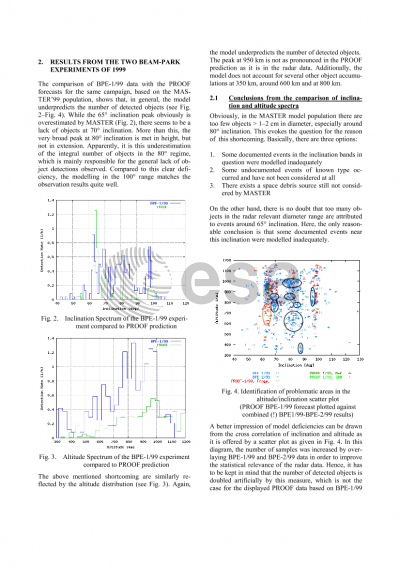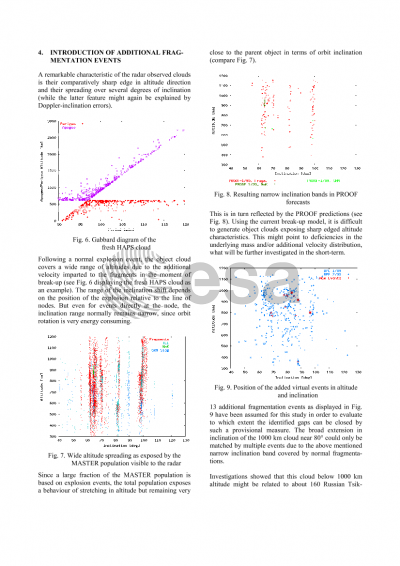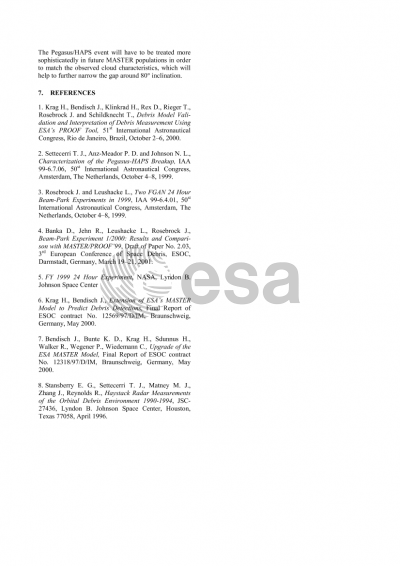Document details

Abstract
The ESA MASTER model predicts the object flux on an arbitrary object in space by simulating all source terms contributing to the Earth environment in a semi-deterministic way. One of the main problems in the past was the incompatibility of flux predictions returned by the model with detection rates achieved by radar or optical observation campaigns. The ESA PROOF tool lately closed this gap by providing a set of filter mechanisms to simulate the observation campaigns in detail from geometrical crossing up to detection by individual devices. For the first time, this tool allowed a detailed comparison of model predictions with observation data. First evaluations have been made using data from the German TIRA radar system as well as data from the US Haystack radar and the ESA Space Debris Telescope. Although attesting a good conformance in general, the results indicate overestimation of some object families on one hand and a complete neglect of some other population fractions on the other. This paper evaluates modifications of the standard MASTER reference population e.g. by introduction of complementary populations, aiming for a better agreement of the MASTER model with the measurement results. The induced effects of the modifications on detection rates are iteratively analysed with PROOF and possibilities for a future improvement of the debris model are pointed out.
Preview







